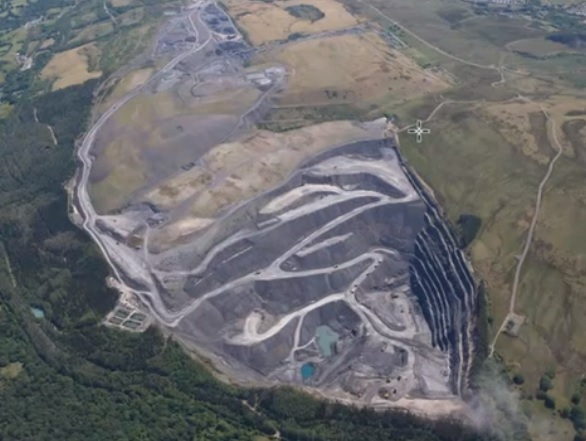A REPORT outlining the risks of the potential failure of a major economic development near Ystradgynlais to Powys County Council is set to go before members of the Governance and Audit committee.
On Thursday, May 8 the committee will receive the report which looks at all the potential risks to the council arising from the development of train and rail track testing facilities at the former Nant Helen coal drift mine site.
If it comes to fruition the £150 million Global Centre of Railway Excellence (GCRE) has a potential to create hundreds of jobs and could revitalise the economy bringing in £300 million into the area.
Head of economy and climate Daniel Burgess said: “The site has an outstanding planning requirement with the council for the restoration of the open cast mine to a natural state, which is not yet satisfied.
“The site is partially restored and understood to be at a satisfactory level of safety at present, although restoration is incomplete.”

The report explains that immediate restoration works would cost £500,000 and that a further £4 million is needed to complete the work.
GCRE have a programme of works worth just over £500,000 taking place from May to the end of August but work to complete the restoration is expected to be tied in with developing the track scheme.
As part of their planning obligations while mining the site, previous owners Celtic Energy were obliged to pay money into a bond to fund the restoration of the site.
Initially £19.5 million had been paid into the bond and the report notes that a further £1.460 million was received from Celtic Energy in April 2024.
The report explains that the council has repaid £16.677 million to fund the work and with interest on the account, the remaining balance at the end of March was £5.415 million.
Mr Burgess said: “The bond funding from Celtic Energy and the partially restored state of the site mean that the final restoration costs are unlikely to be prohibitive, officials are in the process of clarifying these costs.”
Mr Burgess continued: “The most significant risk relating to the success of the GCRE is the ability of the project to attract sufficient investment.
“Initial capital costs for the establishment of the test tracks are substantial and the project includes a diverse range of future revenue streams, but this depends on the initial capital investment.”
He believes that this risk is “compounded” by the need to construct full test tracks before the site can become operational and begin making money.
Mr Burgess stressed: “This is a direct risk to GCRE Ltd, and not the council.”
The report goes on to says that the economic risk for the site is that the demand for its use may not be there.
Mr Burgess said: “Although it should be noted there have been substantial expressions of interest.”
Mr Burgess concluded: “The site does carry reputational risk, but provided the council meets its obligations under planning and relevant economic development support, any risk is diffuse across public actors and not significant.”
In March it was revealed that GCRE have asked county planners if detailed proposals are needed to change the already approved restoration scheme for the site.
This is because they believe that not enough money has been set aside to complete the restoration work.
So far, no decision on this request has been made by planners.
















